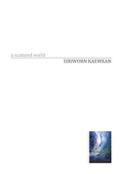
Review
A Scattered World
1999
translated by Marcel Barang
ThaiFiction
Review by Peter Young in The Thai Literary Supplement #8 (March 2016).
What can a reader usually learn from exploring the hidden corners of translated speculative fiction from around the world? That you have to constantly expect the unexpected; that the success rate of discovering new fiction that you like far outweighs the disappointments and, anent to the point that I will make here, it’s not only South Americans and Africans who make decent forays into magical realism. My only previous read from Siriworn Kaewkan was the excellent paperback The Murder Case of Tok Imam Storpa Karde, a very different (and far more grounded) novel than the one under the microscope here.
And it’s a story that does indeed need close inspection: it has hidden interiors that invite peering into, it can have the effect of a fleeting dream if the reader does not take time to establish in one’s head the family relationships at play here and the twisted and rather unnatural turns they take. Set mostly in the earlier half of the twentieth century in a rural Thai community close to the Andaman Sea, the surrealism descends on the town right from the start, and it becomes apparent that one is following the immortal life of the reluctant Abdul Hamid, as his life transforms from one animal species to the next while somehow maintaining family relationships with others who seem similarly afflicted. Beautifully visual scenes take place in both the sky and the ocean, all as civilisation is making its presence felt with the arrival of a new railway connecting this bizarre location and its distinctive unreality to the outside world.
What Kaewkan does well is inject colour and vitality into his scenes. Readers have to trust where Kaewkan is taking them and that the journey will be worthwhile, and the surreality of some of the imagery is attractive and keeps up the necessary engagement with the reader’s imagination. These aren’t the half-baked ideas that usually inform our nightly dreams only to evaporate when they come into contact with the real world; the dreamlike imagery here somehow has a more solid form that has made its way clear onto the written page, and is expressed well. That it also takes the form of the natural world only serves to make it more enduring.
Perhaps what Kaewkan doesn’t do so well is allow the reader to keep apace with the portentious changes and the implications that they just about delineate. This could be something that is lost in translation, though, and it might be a fruitless challenge for any bilingual reader of the Thai original to better the translation on offer here, which I’m sure took me as far on this particular journey as Kaewkan originally intended. One to remember.